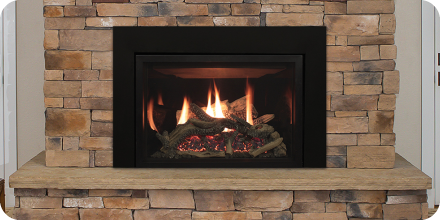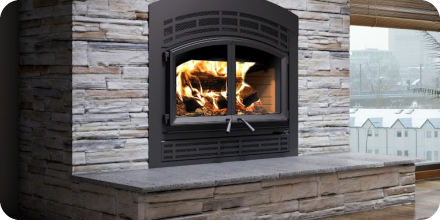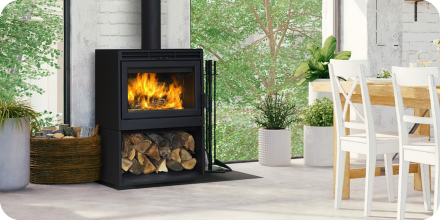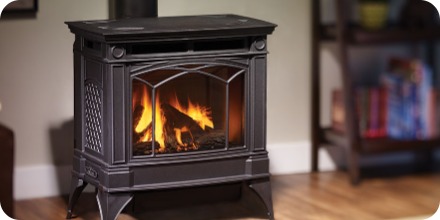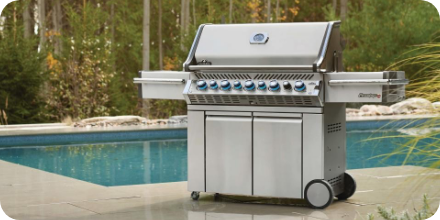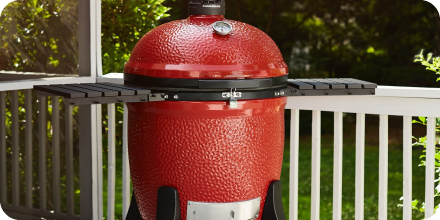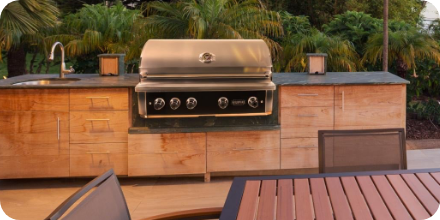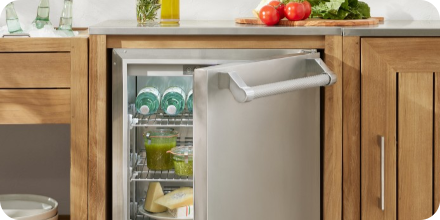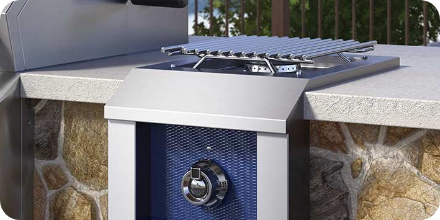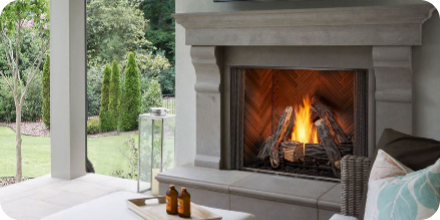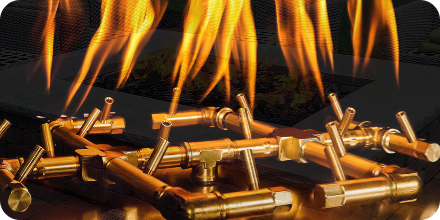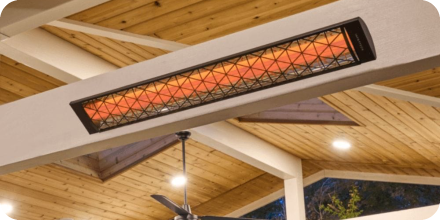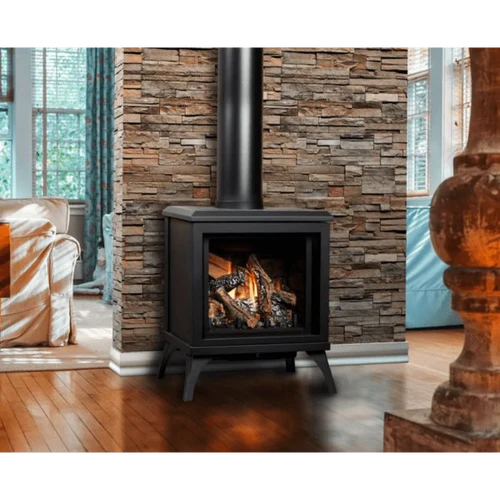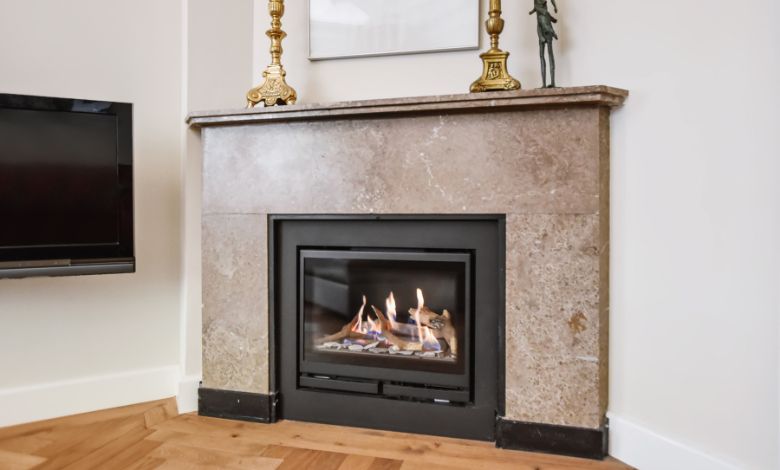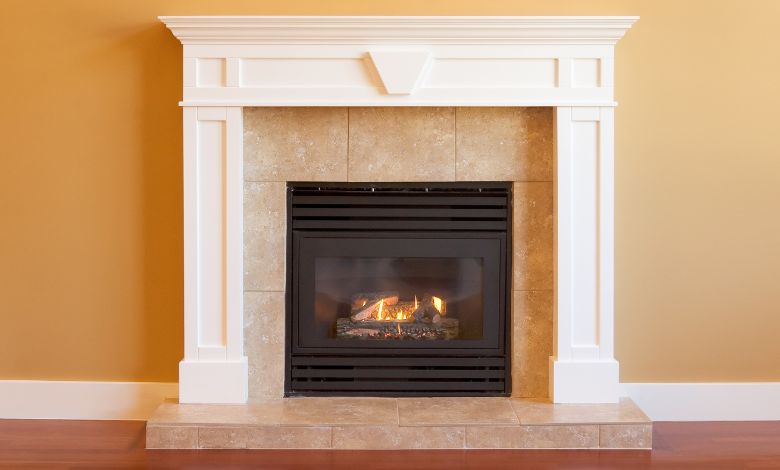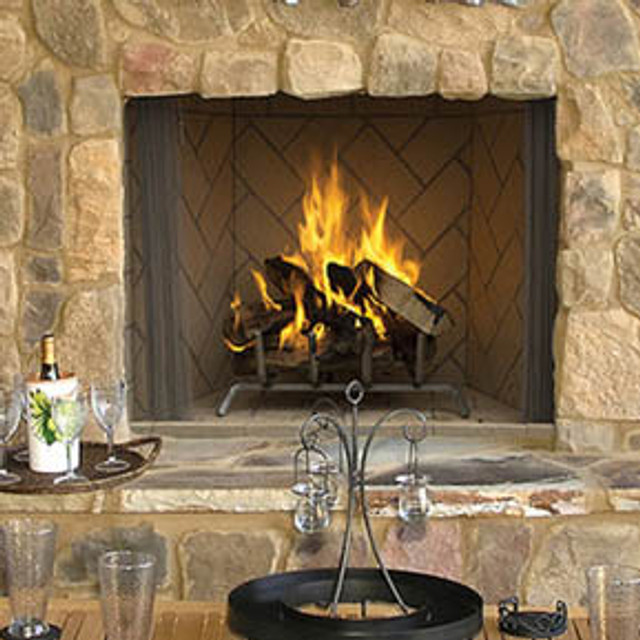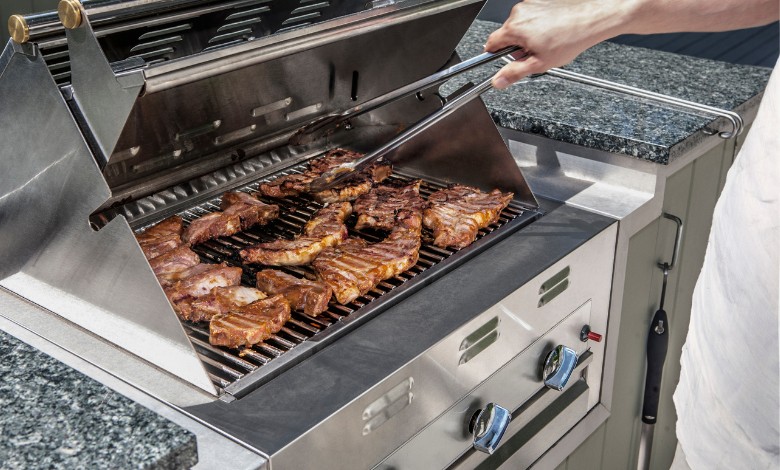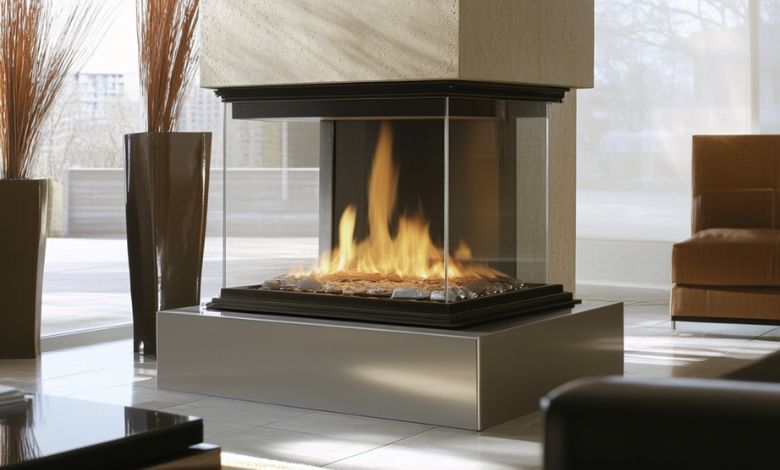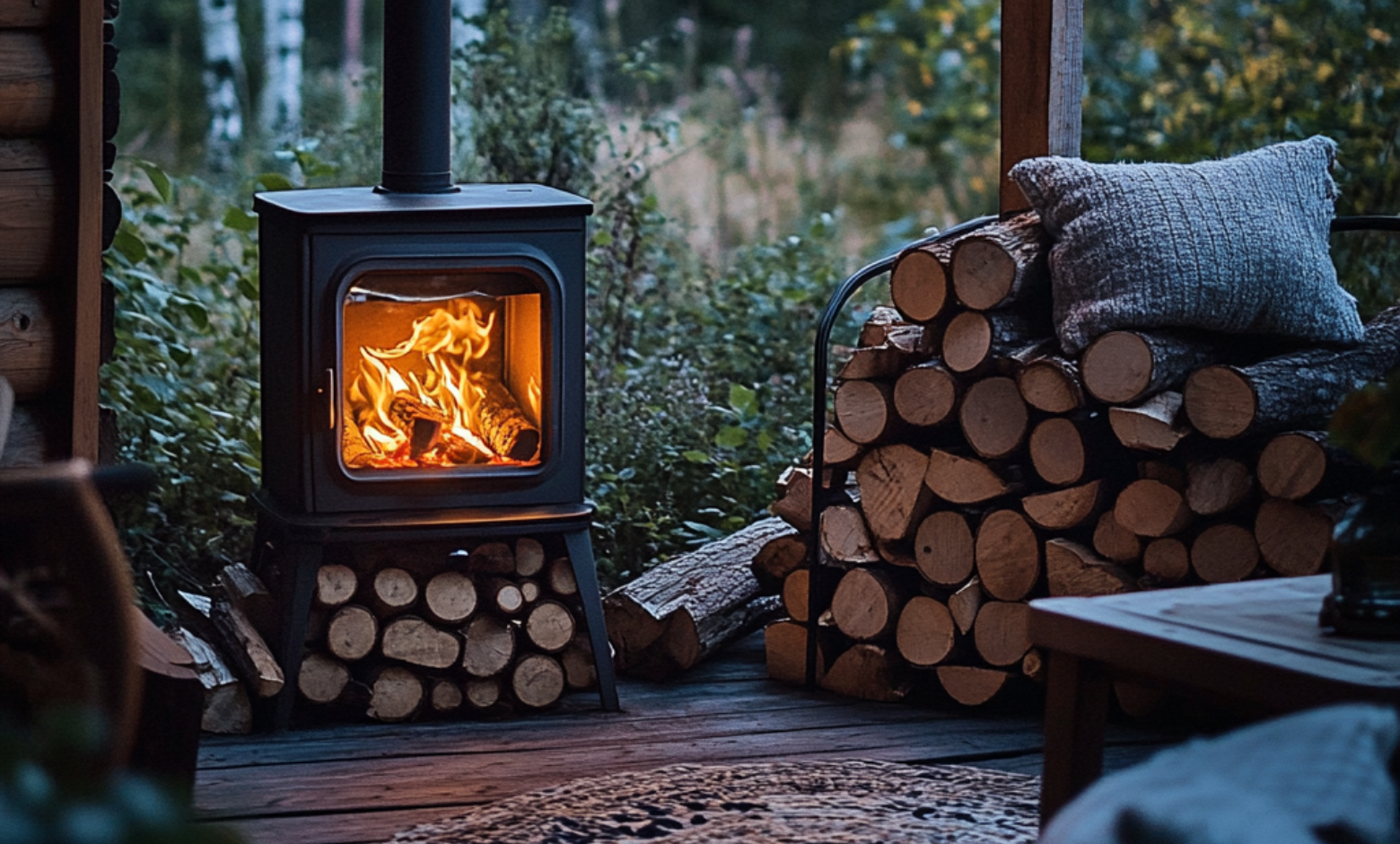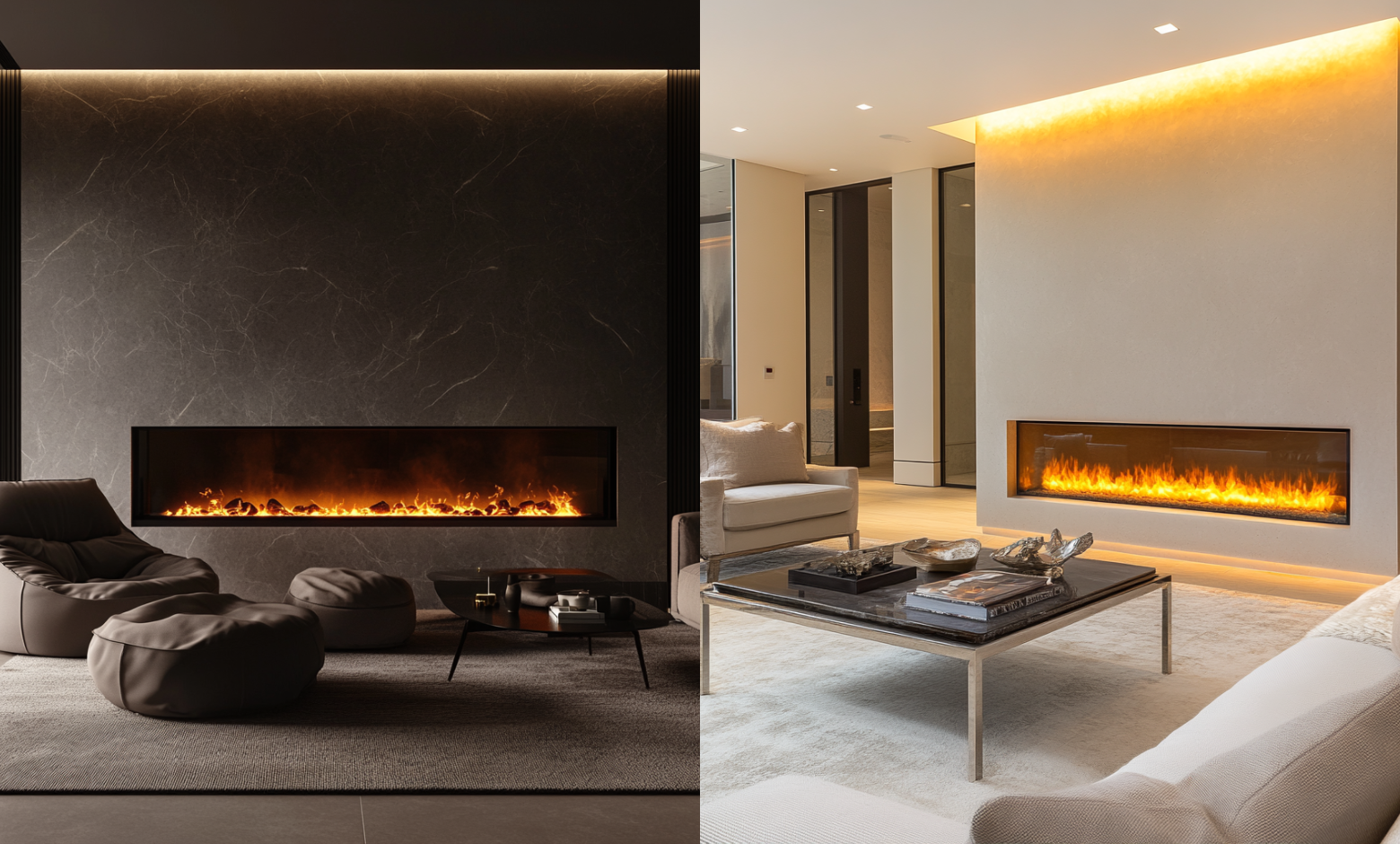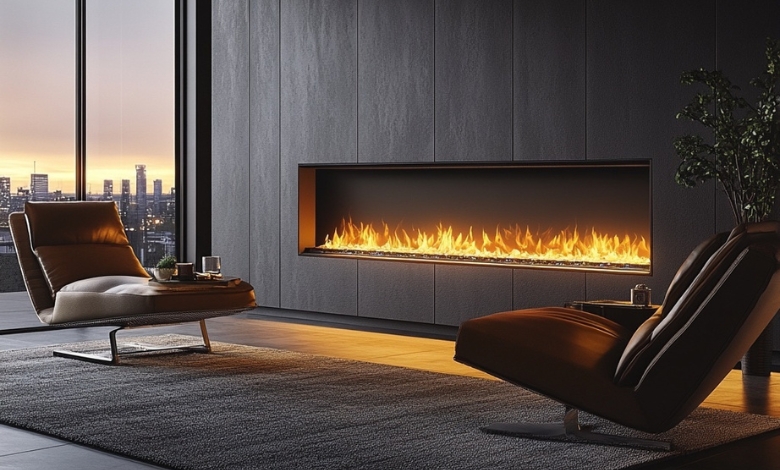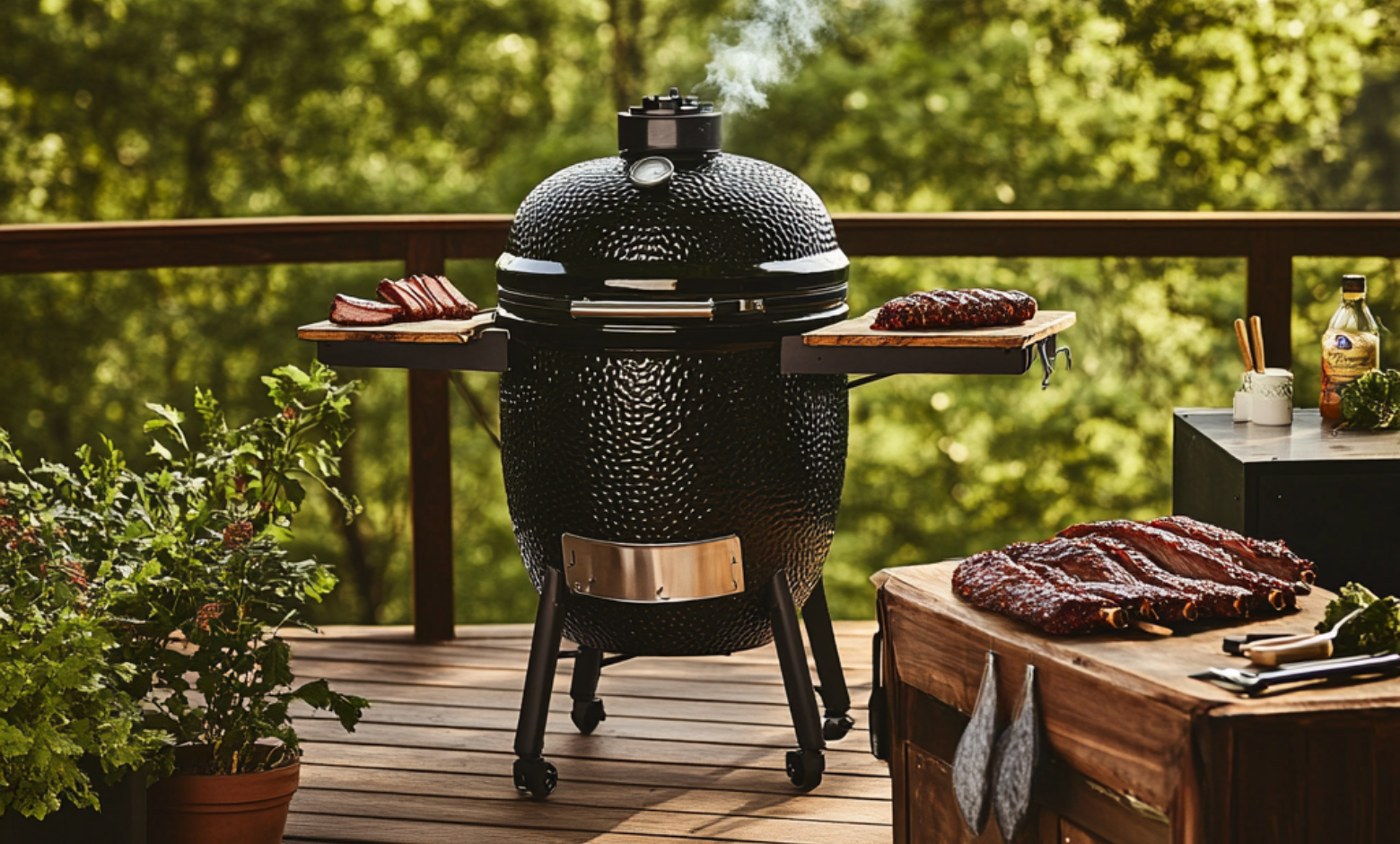What Is A Ventless Gas Fireplace? Everything You Need to Know
Posted by Anna William on May 30th 2025
As the cool autumn breeze settles in and the thought of warm, cozy nights at home becomes more tempting, many consider adding a fireplace to their living area. What if you could enjoy a fireplace's cozy glow and comforting warmth without the hassle of a chimney or vent? Consider the ventless gas fireplace, renowned for its simplicity and efficient setup. In this comprehensive guide, we'll explore what a ventless gas fireplace is, how it works, its benefits, and why it might be the perfect addition to your home.
What Is A Ventless Gas Fireplace?
A vent free gas fireplace is a convenient and energy-efficient replacement for traditional vented fireplaces. Unlike its counterparts, which need a chimney or flue to release combustion byproducts, this type of fireplace operates without any external venting system. This design makes installation easier and improves heat retention throughout the home. Instead, it uses a precision-engineered gas burner and air-fuel mixture to ensure a clean, complete combustion process that minimizes harmful emissions.
The key advantage of a ventless gas fireplace is its high efficiency. Since the generated warmth remains confined within the room instead of dissipating through a vent, these fireplaces can efficiently heat a space with reduced fuel consumption. This attribute renders them a cost-effective option for heating. Moreover, the installation process is more straightforward and less costly because it does not involve constructing or modifying venting structures.
Although ventless gas fireplaces are built to meet strict safety standards and feature oxygen depletion sensors that automatically shut off the unit if air quality drops, they are not allowed in all areas due to concerns over indoor air quality. Therefore, checking local regulations and considering room size, ventilation, and usage patterns is vital before opting for a ventless model.
Are Ventless Gas Fireplaces Safe?
Safety should always be the foremost concern when installing and operating vent-free gas fireplaces. These units have built-in safety features, such as oxygen depletion sensors (ODS), critical in monitoring the room's air quality. The ODS is engineered to detect a drop in oxygen levels and automatically turn off the fireplace if the air becomes unsafe, thus preventing potential hazards like carbon monoxide buildup.
Despite these safety measures, adhering strictly to the manufacturer's guidelines and applicable local building codes is essential to ensure proper installation and operation. This compliance helps to minimize any risks associated with improper usage or setup.
Additionally, consistent upkeep is essential to ensure the ventless gas fireplaces' ongoing safety and performance. This includes periodic checks and cleaning by qualified professionals to ensure the unit functions correctly and the venting system remains unobstructed.
Although vent free fireplaces do not require traditional flues or chimneys, proper ventilation is still crucial. Ensuring that the room has adequate airflow to compensate for the oxygen used by the fireplace is necessary for maintaining a healthy indoor environment. Incorporating extra ventilation measures, like opening windows or utilizing exhaust fans, can improve airflow effectively, boosting safety and comfort.
How Does a Ventless Gas Fireplace Work?
A vent-free gas fireplace, often called a vent-free or unvented unit, provides a practical and effective solution compared to conventional vented fireplaces. Here's how a ventless gas fireplace works:
1. Fuel Source and Combustion
Ventless gas fireplaces use natural gas or propane as their fuel source. These fireplaces are equipped with a gas burner that, when ignited, produces flames similar to those of a traditional fireplace. The gas is delivered to the burner through a supply line connected to your home's gas system or a propane tank.
2. Oxygen and Air Quality
Unlike vented models that expel exhaust outside the home through a chimney or vent, ventless fireplaces are designed to operate at nearly 100% combustion efficiency. This means they burn the gas so entirely that they produce minimal exhaust, allowing them to operate without an external vent. Ventless fireplaces have oxygen depletion sensors to ensure enough oxygen for combustion and safe indoor air quality. These sensors keep track of the oxygen concentration in the room and will automatically turn off the fireplace if the oxygen levels fall below a safe limit.
3. Heat Distribution
Ventless fireplaces are highly efficient at heating rooms because they keep all the heat generated inside the home rather than losing some of it through a chimney or vent. They work by drawing room air into the fireplace, heating it via combustion, and then expelling the warmed air back into the room. This cycle continues, gradually increasing the temperature of the space.
4. Moisture Output
One byproduct of ventless gas fireplaces is water vapor. Because there's no vent to expel the vapor, it increases the humidity levels inside the home. This can be beneficial in dry climates but might require management in more humid environments to prevent condensation and mold growth.
5. Safety Features and Regulations
Ventless gas fireplaces come with several built-in safety features to prevent hazards. Alongside the oxygen depletion sensor, many models include carbon monoxide detectors and automatic shut-off capabilities. Moreover, they are subject to strict regulations and standards to ensure they operate safely within residential spaces. It's worth mentioning that certain localities have laws that either limit or prohibit the installation of ventless fireplaces due to air quality and safety concerns.
6. Installation and Maintenance
Installing a ventless gas fireplace is generally simpler and less costly than installing a vented fireplace, as it does not require a chimney or external venting. However, Regular upkeep is essential for your fireplace's safe and efficient operation. This includes annual inspections by a certified technician, regular cleaning of the burner and control compartments, and monitoring the performance of sensors and other safety systems.
Ventless gas fireplaces offer a practical heating option and the cozy feel of a genuine fire, all without the need for complicated external ventilation. However, considering their unique operational characteristics and the moisture they emit, evaluating whether a ventless model is suitable for your home based on local regulations and specific household needs is essential.
How Long Can You Run a Ventless Gas Fireplace?
When considering how long it takes to run a ventless gas fireplace, it's essential to factor in the specific guidelines provided by the manufacturer and the environment in which the fireplace is installed. Generally, it's advised not to continuously operate a ventless gas fireplace for more than a few hours. This precaution helps prevent moisture buildup and the potential accumulation of combustion byproducts in the room.
The size and ventilation of the room are also crucial. A larger, well-ventilated room may tolerate longer usage than a smaller, less-ventilated space. Always ensure the space is well-ventilated to maintain fresh and healthy indoor air quality.
Moreover, using the fireplace for supplemental heat rather than as a primary heat source is wise. This approach reduces the risk of oxygen depletion and carbon monoxide production, which can be a concern with prolonged use of ventless fireplaces. Regular maintenance and checking of carbon monoxide detectors can also enhance safety.
Is A Ventless Gas Fireplace Right For You?
Choosing a ventless gas fireplace depends on several factors, including your heating needs, home layout, and personal preferences regarding safety and efficiency. If you're looking for a secondary heat source that offers ease of installation and operation with a higher heat output, a ventless gas fireplace might be right for you. However, if you have concerns about indoor air quality or have respiratory issues, consider other options.
Are Ventless Gas Fireplaces Legal?
The legality of ventless gas fireplaces varies by region. Some cities and states have specific regulations or outright bans on vent-free systems due to concerns over air quality and safety. It's crucial to check your area's local codes and regulations before purchasing and installing a ventless gas fireplace.
What's the Difference Between Vented and Ventless Gas Fireplaces?
When selecting a gas fireplace for your home, one of the biggest choices you'll need to make is between a vented or ventless model. Each option comes with its own set of benefits and potential downsides. Knowing the differences will help you decide which type aligns best with your home's layout, comfort needs, and safety considerations. Here's a closer look at how vented and ventless gas fireplaces compare:
Vented Gas Fireplaces
How They Work: Vented gas fireplaces function like classic wood-burning fireplaces, offering a similar ambiance and warmth. They require a chimney or vent to the outside to expel the byproducts of combustion, including carbon dioxide, water vapor, and trace amounts of other gases. This means that they typically need to be installed where a vent or chimney is present or can be built.
Pros:
- Realistic Flame: Because they use real flame and often feature realistic-looking logs, vented fireplaces provide an aesthetic and ambiance that closely mimics a traditional wood fireplace.
- Better Air Quality: With combustion gases directed outdoors, these fireplaces ensure the air inside your home stays clean and unaffected.
- Variety of Styles: Vented fireplaces can come in many styles, from inserts that can be placed in an existing fireplace to freestanding models and built-ins.
Cons:
- Less Heat Efficiency: A significant amount of the heat generated is lost through the vent or chimney, making them less efficient in heat output per unit of gas consumed.
- Installation Constraints: They require a venting system, which can complicate installation and limit placement options within a home.
- Higher Installation and Maintenance Costs: Installing a chimney or flue system can increase installation costs, and regular maintenance is needed to keep the venting clear and functional.
Ventless Gas Fireplaces
How They Work: Ventless gas fireplaces, also called vent-free fireplaces, are built for highly efficient gas combustion, removing the need for a chimney or external vent due to minimal exhaust production. Rather than venting, they release combustion byproducts directly into the room. Ventless fireplaces have oxygen depletion sensors to ensure adequate combustion oxygen and safe indoor air quality.
Pros:
- Higher Efficiency: Almost 100% of the heat generated stays in the room, making ventless fireplaces highly efficient.
- Ease of Installation: Since no venting is required, these units can be installed almost anywhere in the home, offering greater flexibility in design and placement.
- Lower Operating Costs: Ventless fireplaces can be cheaper because they are more efficient and consume less fuel than vented models.
Cons:
- Indoor Air Quality Concerns: Even though ventless fireplaces burn cleanly, the low levels of combustion byproducts released into the home can be a concern, especially in poorly ventilated spaces.
- Moisture Output: They can increase the humidity levels inside the home because water vapor is a byproduct of gas combustion, which might cause issues in tightly sealed homes.
- Flame Appearance: The flame of a ventless fireplace is often less robust and less realistic than a vented model because the combustion is controlled to maximize efficiency.
Making the Right Choice
Choosing between a vented and ventless gas fireplace typically depends on individual preferences, local regulations, and your home's unique requirements. Vented models are ideal for those who prioritize the authenticity of a real flame and do not mind the heating efficiency trade-off. In contrast, ventless models are suitable for those looking for a more cost-effective, easy-to-install heating solution while being mindful of ventilation and air quality impacts.
Before purchasing, consulting with professionals and checking local regulations is essential. Some regions have restrictions or bans on ventless fireplace installations due to concerns over indoor air quality.
Conclusion
Ventless gas fireplaces offer a simple, energy-efficient solution for warming your home, seamlessly blending into modern interiors. With no need for complex renovations, they provide a convenient and low-maintenance heating option. Whether a ventless gas fireplace is an ideal choice depends on your specific needs and the regulations in your area. If you're considering adding one to your home, Embers Living offers a wide selection of models that combine aesthetic appeal with functionality to enhance your living environment. Always prioritize safety and follow local regulations to create a cozy and inviting home environment.



